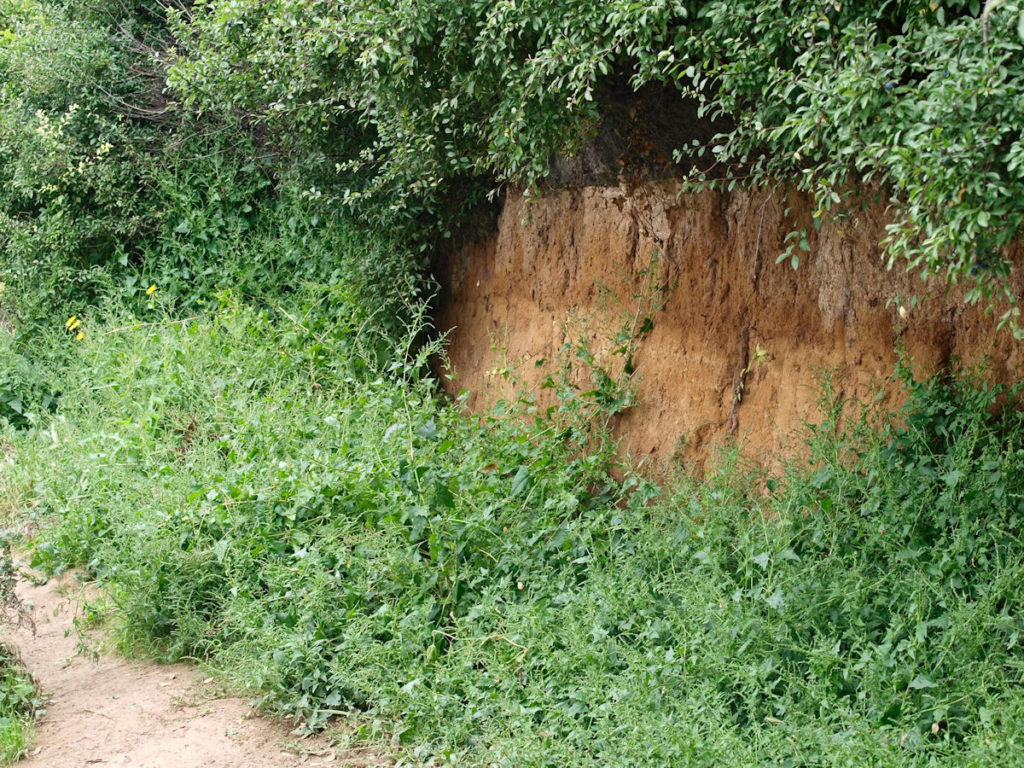The following sites have been selected to represent the different aspects of geology and landscape in the district. Not all sites have something to see; many are solely of historical interest as a record of an important or interesting discovery.
Some sites are not strictly geological but have a geological connection. Geological sites are therefore defined in their widest sense and include, for example, buildings, walls, wells, spas, springs, graves, boreholes, plaques, landslips and viewpoints.
This is not a complete list of geological sites in the district. Others will be added and descriptions expanded as further research is carried out.
Important note:
Not all of the sites here described are accessible. Some sites are on private land and can only be viewed from footpaths that pass through or alongside the site. Inclusion of a site on this list does not, therefore, imply any right of access. Please remember not to trespass on private land.
Sites of Special Scientific Interest (SSSIs)
Foulness Island and Maplin Sands (part of Foulness SSSI) (TR 048 954)
The Foulness coastline is of considerable geomorphological interest. At Foulness Point, saltmarsh is fringed by a prominent bank of empty cockle shells known as a ‘chenier ridge’ similar to that at Bradwell-on-Sea. This is the most extensive shell beach in Britain. Maplin Sands is an extensive area of mudflats and sand banks off the coast of Foulness. Access to Foulness Island is restricted to those that live and work there. Permission to visit must be obtained from the Ministry of Defence who own the entire island and use it as a base for artillery ranges over the Maplin Sands.
Local Geological Sites (LoGS)
Rochford District Council – Report on Local Geological Sites – Revised March 2021
GREAT WAKERING. Star Lane Pits (TQ 939 872)
The only place in Essex where a visible section of brickearth (loess) can be found. Low cliffs of brickearth can be seen adjacent to footpaths in this pit which is important for its wildlife. Loess is a fine silt which originated as a wind-blown (aeolian) dust carried great distances from cold, dry land close to an ice sheet to settle and be compacted to form a sedimentary rock. It was probably deposited during the most recent glaciation of Britain (at least 20,000 years ago) although it is very difficult to date and some may be older.
Star Lane Pits LoGS Citation – November 2018
HULLBRIDGE. Hullbridge Foreshore (TQ 804 955)
Prehistoric land surface, perhaps as much as 8,000 years old, is revealed at low tide. Peat beds can be seen with evidence of human occupation in the form of Mesolithic flint implements. Sea level was then much lower and the site lay well inland. Important site for understanding sea level change. Beware of intertidal mud.
Hullbridge Foreshore LoGS Citation – November 2018
Other Sites
HOCKLEY Hockley Spa Pump Room. (TQ 841 925)
Original pump room of Hockley Spa is a prominent building in the town and one of the finest pump rooms in Britain. A grade 2 listed building. Building is privately owned but can be seen from the road.
HOCKLEY. Hockley Woods (TQ 833 924)
The foundations of the woods is London Clay overlain by Claygate Beds and Bagshot Sand. On the highest ground there are patches of Oakwood Gravel, laid down by the River Medway perhaps as much as 700,000 years ago.
ROCHFORD. Doggetts Pit. (TQ 880 915)
Doggetts Pit has some very limited exposures of Rochford Gravel. Rochford Gravel is an infilling of the Rochford Channel which is thought to have been cut by the Thames about 400,000 years ago shortly after the diversion of the river by the Anglian ice sheet. The Rochford Channel is therefore an upstream equivalent of the famous Clacton Channel (see under Tendring District). Patterned ground with fossil ice-wedge polygons are present in the adjacent fields and can be seen on aerial photographs taken during dry Summers. The site is now a popular fishing lake with sandy gravel exposed in the banks.
WALLASEA ISLAND. Wallasea Island Wild Coast Project. (TQ 945 946)
Wallasea Island is a two by four mile area of reclaimed land that is the subject of a scheme by the RSPB to restore the landscape of intertidal creeks and saltmarsh that was lost by reclamation. It will be the largest and most important coastal habitat recreation scheme in the UK. The project will restore at least some of the coastal saltmarsh that has been lost as a result of land reclamation, sea level rise and the gradual sinking of south-east England. The work is due for completion in 2019. There is a car park at TQ 945 946 but there are currently few facilities for visitors.

